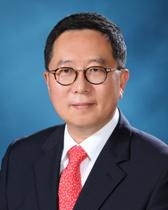










|
Title of Talk How to Control Molecular Properties Optically?
Abstract With the introduction of strong lasers, selectivity and robustness in optical control have been major research interests. Adiabatic passage (AP) process can provide robust and stable control scheme without the needs for considering fluctuations in the experimental parameters. In the control scheme based on SCRAP, one uses laser-induced Stark-shift as a controllable experimental parameter. The strong Stark pulse induces curve-crossing between diabatic states and leads to the construction of new adiabatic states. By exerting the pump and Stokes pulses at the time of curve-crossing, one may induce the population transfer. Examples for novel quantum control schemes using strong lasers, based on adiabatic passages assisted by dynamical Stark shift, will be described. We will also demonstrate how one can use ultrashort laser pulses to prepare wave packets containing a quantum superposition of both electronic and nuclear degrees of freedom, such that the motion of both electrons and nuclei is highly correlated and occurs in the time-scale of the nuclear motion. With the molecular hydrogen ion as a model system, it was shown that we can create large oscillating dipole moments whose amplitude and period can be controlled by means of a strong static electric field. This approach has potential applications in controlling the reactivity of a molecule.
References: 1. B. Y. Chang, S. Shin, A. Palacios, F. Martín, and I. R. Sola, ChemPhysChem 14, 1405 (2013). 2. B. Y. Chang, S. Shin, J. Santamaria, and I. R. Sola, J. Phys. Chem. A 116, 2691 (2012). 3. B. Y. Chang, S. Shin, J. Santamaria, and I. R. Sola, J. Chem. Phys. 134, 144303 (2011). 4. B. Y. Chang, S. Shin, and I. R. Sola, Phys. Rev. A 82, 063414 (2010). |
|
Seokmin Shin, Professor
Department of Chemistry, Seoul National University, Seoul 151-747, SOUTH KOREA e-mail: sshin@snu.ac.kr
Selected Publications 1. Bo Y. Chang, Seokmin Shin, Alicia Palacios, Fernando Martín and Ignacio R. Sola, ChemPhysChem, 2013, 14, 1405 2. Heesoo Park, Jin Yong Lee and Seokmin Shin, J. Phys. Chem. C, 2012, 116, 20054 3. Tae-Rae Kim, Seokmin Shin and Cheol Ho Choi, J. Chem. Phys., 2012, 136, 214704 4. Samuel C. Flores, Julie Bernauer, Seokmin Shin, Ruhong Zhou, and Xuhui Huang, Brief. Bioinform., 2012, 13, 395 5. Won-joon Son, Soonmin Jang and Seokmin Shin, J. Mol. Model., 2012, 18, 213 |
